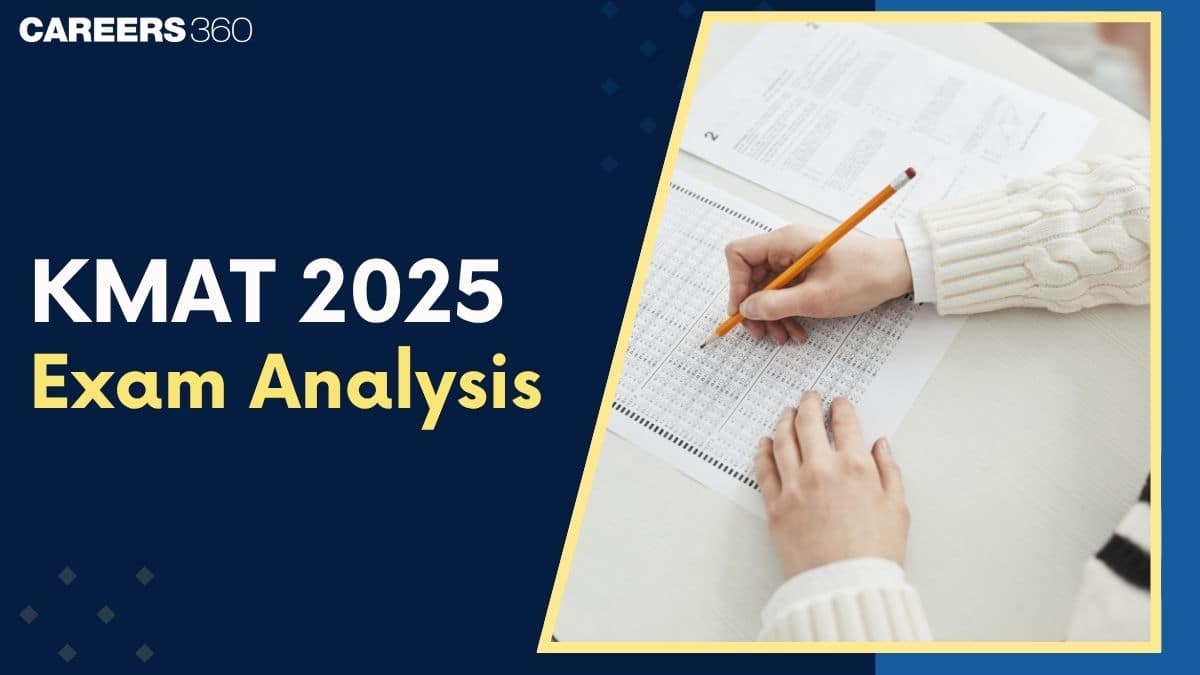KMAT 2025 Kerala Session 2 Analysis: English Language Usage and Reading Comprehension
Difficulty Level: Easy
The English section in KMAT 2025 Kerala Session 2 was considered simple, allowing candidates to secure marks with ease.
Vocabulary questions included identifying similar and opposite words, as well as spotting correct spellings.
Grammar areas such as the use of prepositions, sentence types, reported speech, and sentence correction were tested.
Questions requiring sentence arrangement (parajumbles) assessed understanding of logical flow.
Common expressions, voice conversion (active/passive), and gap-filling exercises were part of the paper.
Reading comprehension passages were concise with direct questions, making them manageable within the time limit.
Overall, this section was less time-intensive and provided candidates with the opportunity to boost their overall score.
KMAT 2025 Kerala Session 2 Analysis: Quantitative Aptitude
Difficulty Level: Moderate
The Quantitative Aptitude section in KMAT Kerala 2025 Session 2 tested candidates with a blend of fundamental and applied math problems.
Problems related to simple and compound interest were straightforward, mostly formula-based, and easier to solve.
Various types of questions on ratio and proportion appeared, highlighting their practical uses in different contexts.
Some questions involved the number system, including operations with fractions, though these were limited in number.
The paper included problems on time and work, which required logical steps to calculate work efficiency or time taken.
Several questions focused on proportional relationships, demanding understanding of how quantities relate to each other.
Percentage-related problems tested candidates on practical scenarios such as profit margins and discounts.
Additional questions covered progressions and sequences, requiring knowledge of arithmetic and geometric progressions.
A few questions were from the profit and loss topic, involving straightforward computations based on cost price and selling price.
Candidates familiar with basic quantitative concepts and practice methods found this section manageable but moderately challenging.
KMAT 2025 Kerala Session 2 Analysis: Data Sufficiency and Logical Reasoning
Difficulty Level: Moderate
The Data Sufficiency and Logical Reasoning segment in KMAT Kerala 2025 presented a variety of reasoning puzzles and analytical challenges.
Arrangement problems, including both circular and linear seating or positioning, demanded careful tracking of given clues.
Several questions required solving coding and decoding puzzles, involving pattern recognition in symbolic or alphabetical codes.
The section included short puzzles that tested quick logical thinking and pattern analysis.
Questions related to statement and effect tested understanding of cause and consequence relationships.
Direction sense tests evaluated the candidate’s ability to determine spatial orientation and movements.
Problems on arranging words or sentences assessed the ability to order information logically and coherently.
Blood relation questions were present, focusing on deciphering family relationships based on given statements.
The data sufficiency questions challenged candidates to decide whether the provided information was enough to solve a given problem.
Critical reasoning questions included evaluating statements and assumptions, as well as judging strong and weak arguments.
The section also had analogy questions, requiring identification of relationships between pairs of items.
Overall, this section demanded a balance of sharp reasoning skills, careful interpretation, and time management.
KMAT 2025 Kerala Session 2 Analysis: General Knowledge and Current Affairs
Difficulty Level: Moderate
The General Knowledge and Current Affairs section in KMAT Kerala 2025 Session 2 was heavily based on static GK topics.
A significant number of questions were from books and authors, testing candidates’ literary awareness.
Indian Geography questions featured prominently, focusing on states, capitals, and important physical landmarks.
Several questions required knowledge of full forms and abbreviations related to key government bodies and organizations.
The exam included questions on national and international organizations, assessing familiarity with their roles and functions.
Word association questions appeared to evaluate candidates’ ability to connect related words and concepts quickly.
Current affairs questions were limited, making a strong grasp of static general knowledge essential for scoring well.
Candidates who regularly studied static GK from reliable sources found this section manageable and scoring.

